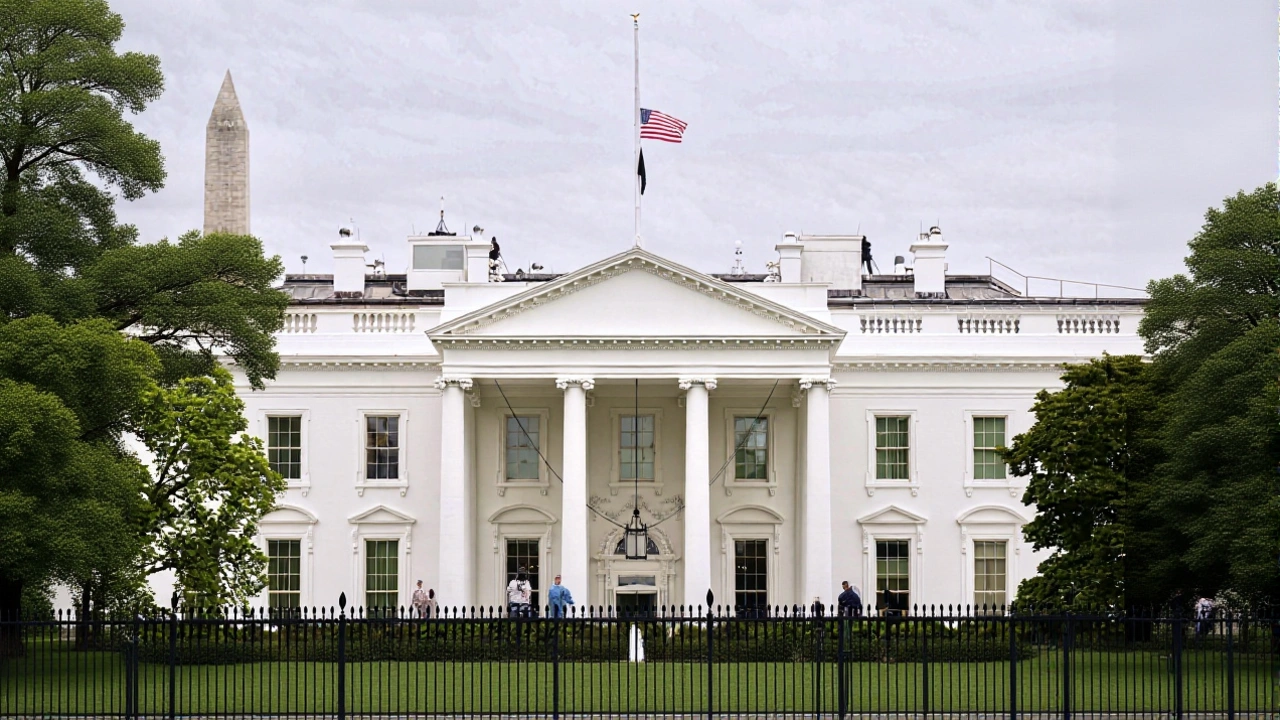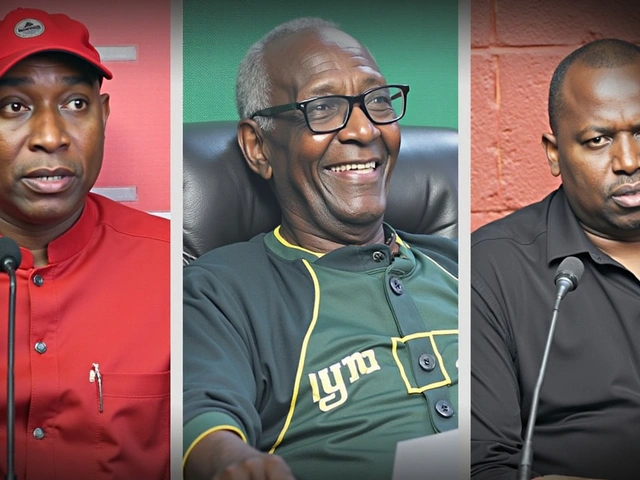When White House issued a presidential proclamation on September 19, 2025, it unleashed a wave of confusion across tech firms, universities and staffing agencies that rely on the H‑1B visa program. The decree, effective at 12:01 a.m. Eastern Time on September 21, 2025, demands a one‑time $100,000 fee for every new petition filed after that moment. Karoline Leavitt, the White House Press Secretary, later reassured the public on X that the change targets only fresh applications, not existing workers or renewals. Meanwhile, Department of Homeland Security instructed U.S. Citizenship and Immigration Services (USCIS) to pause any adjudication until the fee is paid, even though a practical payment mechanism remains elusive.
Historical Context: How the H‑1B System Got Here
Since the program’s inception in the early 1990s, the H‑1B visa has been marketed as a bridge for skilled foreign talent to fill gaps in the U.S. labor market. Over the years, the fee structure has hovered under $4,000 for most employers: $215 for the lottery registration, a $780 petition fee, and ancillary costs ranging from $1,800 to $2,600 for fraud prevention, public‑law training and premium processing. Those numbers, while not trivial, were manageable for midsize tech firms and university research departments.
The Trump administration, which pushed a hard‑line stance on immigration, argued that the system was being gamed by outsourcing firms that undercut U.S. wages. That rhetoric set the stage for the September 2025 proclamation, which, on paper, raises the cost ceiling by more than 2,400 percent.
Details of the Proclamation: What the New Rule Actually Says
The proclamation reads like a legal hammer: any H‑1B petition filed after September 21, 2025 must be accompanied by a $100,000 payment, or else the applicant is deemed inadmissible. The fee is described as a "one‑time entry charge" rather than an annual or recurring cost. Crucially, the text makes no distinction between cap‑subject and cap‑exempt categories, though later agency guidance narrows the impact to new cap‑subject petitions selected in the upcoming February 2026 lottery.
- Amount: $100,000 per new petition.
- Effective date: 12:01 a.m. ET, September 21, 2025.
- Scope: New H‑1B petitions filed after the effective date; does NOT affect renewals, extensions, or existing visas.
- Target group: Applicants outside the United States selected in the February 2026 lottery (FY2027 cap).
At the time of writing, neither the Department of State nor DHS has published a portal for the payment, leaving employers to wonder where to send a six‑figure check.
Agency Clarifications: Cutting Through the Confusion
Within 24 hours of the proclamation, three federal bodies released memoranda to soften the panic. On September 20, U.S. Customs and Border Protection issued a statement clarifying that the fee "only applies prospectively to petitions that have not yet been filed" before the September 21 deadline. The same day, USCIS circulated a memorandum echoing that the charge does not apply to:
- Beneficiaries of petitions filed prior to September 21, 2025.
- Workers currently holding approved H‑1B visas.
- Anyone with a valid H‑1B non‑immigrant visa traveling in and out of the United States.
On September 21, USCIS added a FAQ page confirming that renewals, extensions and cap‑exempt categories (such as L‑1 intra‑company transferees, EB‑5 investors, P‑1 athletes, R‑1 religious workers and TN professionals) remain untouched.
Impact on Employers and Workers: The Real‑World Fallout
Raleigh‑based immigration attorney Omar Bashi described the immediate reaction as "pure panic." He told reporters that two of his clients "started freaking out" because they had engineers overseas waiting on H‑1B approval, and the absence of a clear payment path left them in limbo.
Smaller startups, which previously budgeted around $3,500 per H‑1B hire, now face a potential $100,000 hit—a barrier that could push them to either hire domestically or turn to alternative visa streams like O‑1 extraordinary ability petitions. Larger corporations, with deep pockets, may view the fee as a cost of doing business, but even they will have to re‑evaluate recruitment pipelines.
The ripple effect extends to universities that rely on international graduate students for research labs. Many institutions have historically sponsored H‑1Bs for post‑doctoral scholars; the new fee threatens to reduce those opportunities unless federal exemptions are granted on a case‑by‑case basis.
Legal and Policy Implications: What the Future Might Hold
Legal scholars note that the proclamation skirts traditional rulemaking processes, raising questions about its enforceability. While the Department of Homeland Security retains authority to grant "national interest" waivers, the criteria for such exemptions are vague.
Critics argue that the fee could be challenged in court as an unlawful surcharge that violates the Immigration and Nationality Act’s prohibition on excessive fees. Pro‑business groups are already mobilizing to file amicus briefs, citing the economic harm to the tech sector—a sector that contributed $1.9 trillion to GDP in 2024.
On the other side, the administration defends the measure as a deterrent against so‑called "visa shopping" and a way to protect American wages. Whether the policy will stand the legal test remains to be seen, but the debate has already renewed calls for comprehensive immigration reform.
Looking Ahead: What to Watch in the Coming Months
The next major milestone is the February 2026 H‑1B lottery, formally known as the February 2026 H‑1B lotteryUnited States. Employers must decide whether to pay the fee, seek a national‑interest waiver, or explore alternative visa categories.
Watch for further guidance from USCIS on payment logistics, and for any congressional hearings that may address the policy’s constitutionality. For now, the $100,000 fee sits like a land‑mine for any company hoping to bring fresh talent onto U.S. soil.
Frequently Asked Questions
Who must pay the $100,000 fee?
The fee applies only to new H‑1B petitions filed after September 21, 2025 and to applicants selected in the February 2026 lottery. Existing H‑1B holders, renewal requests, and cap‑exempt categories are exempt.
How does the fee affect small businesses?
Small firms, which normally spend under $4,000 per H‑1B hire, now face a $100,000 hurdle. Many may postpone hiring foreign talent, shift to domestic recruitment, or seek alternative visas, potentially limiting their growth and innovation capacity.
Can an employer obtain a waiver?
The Department of Homeland Security may grant a national‑interest waiver, but the guidance is vague and approvals appear to be on a case‑by‑case basis. Employers must submit a detailed justification demonstrating how the worker benefits U.S. interests.
What happens to petitions filed before September 21?
Petitions lodged before the effective date remain valid and will be processed without the $100,000 charge. USCIS has confirmed that those filings are unaffected and will continue through the regular adjudication pipeline.
Is the fee likely to face legal challenges?
Immigration lawyers argue the surcharge may breach the Immigration and Nationality Act’s fee‑limit provisions. Several industry groups have hinted at filing lawsuits, so courts could see a test case within the next year.







Amy Paradise
Wow, that $100k fee is a massive shock to the system :) The tech world is already buzzing, and startups feel the pinch hardest. Even universities are scrambling to figure out how to keep their international researchers alive. It’s gonna be a wild ride, hope everyone finds a workaround 😊
Janette Cybulski
It’s heartbreaking to see talented folks caught in the middle of policy churn.
Mildred Alonzo
The new fee essentially bars small firms from bringing in fresh talent. While big corporations might absorb the cost, the broader innovation pipeline suffers. It also raises legal questions about the surcharge’s conformity with the INA. Many employers are already consulting immigration counsel to assess waiver options. The uncertainty alone could stall hiring for months.
Elizabeth Bennett
The proclamation feels like a blunt instrument aimed at curbing what the administration calls “visa shopping,” but the collateral damage may far outweigh any intended benefits. For startups that operate on lean budgets, a six‑figure entry fee is practically a death sentence, forcing them to either lay off ambitious engineers or pivot to domestic hiring, which can be both slower and more costly. Larger tech giants, while cash‑rich, will likely pass the expense onto their shareholders, potentially inflating product prices for consumers. Universities that depend on international post‑docs and graduate students for cutting‑edge research now face a budgetary cliff, threatening the United States’ position in global science rankings. Legal scholars argue that the surcharge could violate the Immigration and Nationality Act’s fee‑limit provisions, opening the door to a cascade of lawsuits that could clog the federal courts. Meanwhile, industry groups are already mobilizing amicus briefs, warning that the policy could shave billions off the nation’s GDP by stifling talent inflow. The Department of Homeland Security’s vague “national‑interest waiver” language adds another layer of ambiguity, leaving employers guessing which petitions might qualify. Some analysts predict a surge in alternative visa applications, such as O‑1 and EB‑1, which could shift the immigration landscape in unforeseen ways. The lack of a clear payment portal only compounds the confusion, as firms scramble to find a bureaucratic workaround before the February 2026 lottery. Critics also point out that the fee’s blanket application ignores the nuanced differences between cap‑subject and cap‑exempt categories, effectively penalizing even those who would otherwise qualify under a different visa class. Pro‑business coalitions argue that the fee is a necessary deterrent against outsourcing firms that undercut American wages, yet the data on such practices remains inconclusive. Congressional oversight committees are expected to hold hearings in the coming months, signaling that the policy may soon face legislative pushback. In the meantime, many foreign professionals are weighing the risk of applying at all, fearing that the financial barrier could jeopardize their immigration plans. The broader tech talent pipeline could see a slowdown, with ripple effects on innovation, startup formation, and even the venture capital ecosystem. Ultimately, whether this fee stands the test of law or market forces remains to be seen, but its mere presence has already sent shockwaves through every corner of the H‑1B community.
linda menuhin
i guess the gov just wants us to think twice before hiring from abroad lol but real talk the fee is insane it’ll kill many small biz dreams.
Jeff Abbott
People keep whining about the fee instead of admitting they rely too much on cheap foreign labor.
Quinton Merrill
The fee is basically a wall for people who want to chase the American dream 💸. Small startups will probably shut down their overseas programs, which is a huge loss for innovation. Big firms might just absorb it, but that cost gets passed to consumers eventually. I’m curious how the waiver process will actually work – the guidance is super vague. Also, universities could see a brain drain if they can’t sponsor new researchers. Hopefully, Congress steps in before the February 2026 lottery becomes a disaster.
Linda Lawton
Obviously this is just another power grab to keep the “global elite” out.
Ashley Bradley
The philosophical underpinnings of a $100k surcharge reveal a troubling shift toward protectionism cloaked in nationalist rhetoric. Yet, when we examine the empirical data, the correlation between high fees and reduced illegal immigration is tenuous at best. Moreover, the unintended consequences on legitimate talent pipelines cannot be ignored. The academic sector, which thrives on open exchange, will likely suffer a talent vacuum as scholars balk at the cost. Startups, the engine of job creation, will be forced to either scale back ambition or seek alternative, perhaps less rigorous, visa categories. In a broader sense, this policy may erode the United States’ soft power, as the world watches how we value skilled immigration. It also raises ethical questions about commodifying human capital with such a steep price tag. Ultimately, the decision to impose this fee reflects a deeper societal debate about who gets to belong and who is priced out of the American promise.
Joe Delaney
Big fee will hit startups hard.
Ruben Vilas Boas
Agreed, the cost is absurd for small firms. They’ll need to explore other visa routes or cut back hiring.
George Thomas
The introduction of a six‑figure fee marks an unprecedented escalation in immigration policy. While the administration cites protection of domestic wages, the broader economic implications merit rigorous analysis. Stakeholders across sectors must assess both legal challenges and operational adjustments. A transparent implementation framework will be essential to mitigate undue disruption.
Zoe Birnbaum
It’s wild how quickly the landscape can change overnight. I’m keeping an eye on the waiver announcements. Let’s hope there’s some clarity soon.
Neha xo
The $100k fee is a massive hurdle for many Indian tech firms looking to expand in the US. While the intention might be to curb exploitation, the practical effect could be a talent drain back to India. Our universities also rely heavily on H‑1B scholars for cutting‑edge research. If the fee stays, we might see a shift toward more domestic PhD programs. It’ll be interesting to see how policy adapts in the coming months.
Rahul Jha
Honestly this is a disaster for our industry 😬💥. Hope Congress does something fast.
Gauri Sheth
This fee is just another tool to keep us out it’s unfair and cruel. The government should focus on real issues not charging insane amounts. We deserve better treatment.
om biswas
What a ridiculous move by the western elites to sabotage real talent! This is clearly an attempt to keep India’s best engineers at home where they belong. If they think they can stop us, they’re sorely mistaken. The world will see through this charade soon.
sumi vinay
Even with this hurdle, our community remains resilient and innovative. We’ll find alternative pathways and keep pushing forward. Stay hopeful, everyone!
Anjali Das
This is just fear‑mongering by those who can’t handle competition. It won’t stop the best from coming.